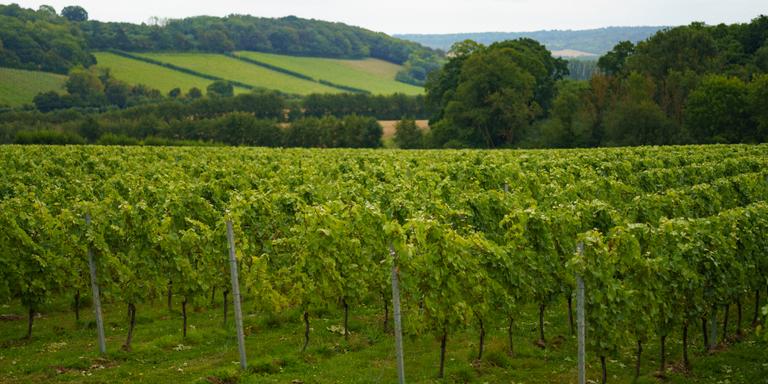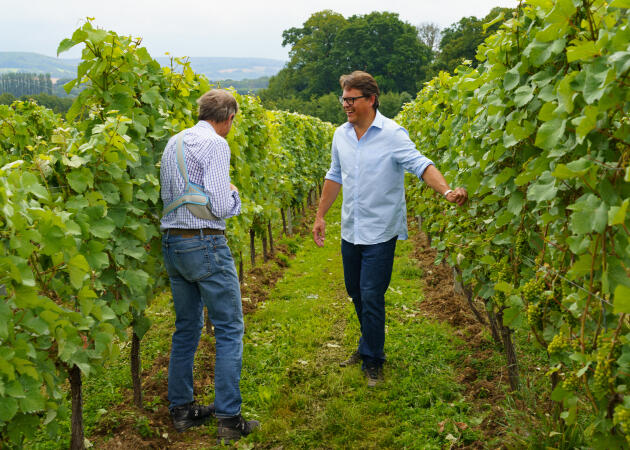


Global warming boosts wine production in the English countryside
FeatureIn Kent, Sussex, Essex and even Cornwall, vines are appearing in places previously considered too far north to produce quality wine. Major champagne brands have followed in the footsteps of pioneers, fostering an ecosystem around the country's nearly 4,000 hectares of vineyards.
With deep green valleys, neat cottages sheltered behind hedges and the silhouette of a Norman church at the bottom of the valley, the village of Chilham, in the county of Kent, has all the charms of a postcard. There is a good reason why this southeastern part of the UK is known as "the Garden of England."
Less than an hour by train from central London, the limestone-veined land has been home to orchards and sheep meadows since time immemorial. But on a late August day, wine expert Patrick McGrath and farmer Mark Gaskain were inspecting vines. Pinot noir, pinot meunier and chardonnay, the traditional grape varieties of champagne wines, are planted on some 50 hectares.
The vines are planted in perfectly straight rows, grown high and with well-thinned leafage, to ensure the best light for the bunches of grapes, whose berries were still green. "We expect the harvest to start around October 5 or 6, but September will be crucial: It's been a poor summer so far, and we need sunshine," said McGrath, head of Hatch Mansfield, which specializes in wine distribution and marketing. He's partially right: September began with a week of a historic heatwave in the United Kingdom, a blessing for the vineyards.

Having served as an agent for Taittinger champagnes in the UK since the late 1990s, the expert teamed up with the famous French house in 2015 to buy 80 hectares of land from the Gaskain family, one of the UK's leading fruit growers. Since 2017, almost 50 hectares of vines have been planted on land that probably had not carried any since the Roman conquest two millennia ago. The vineyard was named Domaine Evremond, in reference to Charles de Saint-Evremond (1614-1703), a French poet and epicurean who is said to have introduced the first wines from Champagne to the English court.
The first grapes were harvested in 2020, but the méthode champenoise ("champagne method") requires time (three years for fermentation, blending and disgorging). The first bottles will not be sold until September 2024. "I'm sure it will be a very good wine, but the trade is very much waiting for us," said McGrath with some concern. In the meantime, some of the wine is being stored in large, brand-new barrels in an old hangar, pending transfer to a new winery being built on the edge of the estate, complete with a store and tasting area.
The aim is to produce 400,000 bottles of sparkling white, which of course cannot be labeled as champagne or refer to the protected méthode champenoise. Pierre-Emmanuel Taittinger, former CEO of the champagne house – he passed the reins to his daughter Vitalie in 2020 – spared no expense for this €15 million diversification, but that is the price of participating in the British wine revolution.
You have 71.97% of this article left to read. The rest is for subscribers only.
